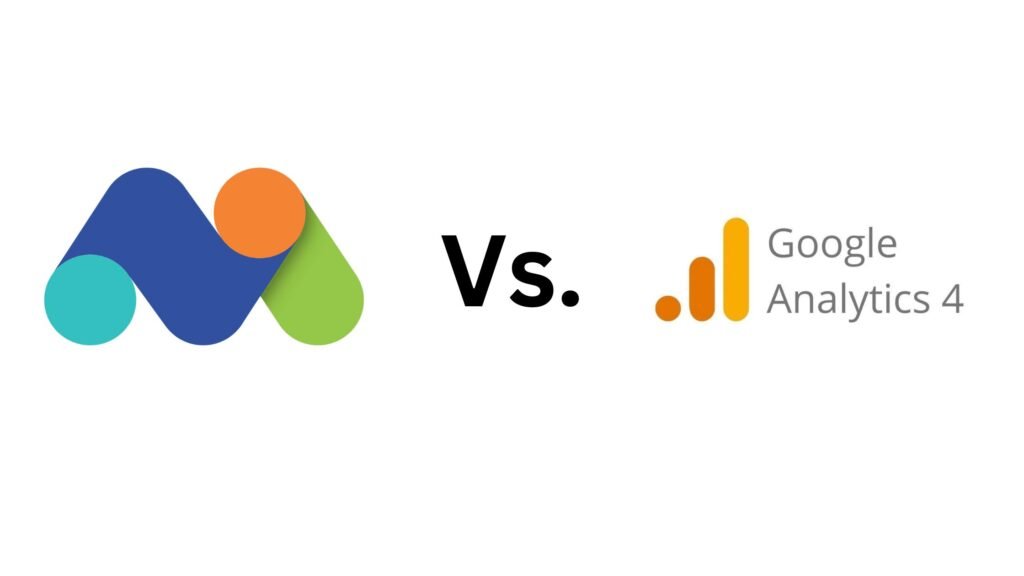
When it comes to website analytics, there are several options available to help businesses track and understand their web traffic. Two of the most popular options are Matomo (formerly Piwik) and Google Analytics 4 (GA4). Both tools offer robust analytics and reporting capabilities, but there are some key differences between the two that can make one a better fit for your organization than the other. In this blog post, we’ll take a closer look at the top 10 advantages of Matomo over GA4.
- Data Ownership: One of the biggest advantages of Matomo is that it allows you to host the software on your own server, which means you own and control all the data collected. With GA4, the data is stored on Google’s servers and is subject to their privacy policy. This can be a significant concern for businesses that are subject to strict data protection regulations or that simply want to maintain control over their data.
- Privacy: Matomo has built-in privacy features, such as IP anonymization and the ability to opt-out of tracking, that allow you to comply with data protection regulations like GDPR. In contrast, GA4 is subject to Google’s privacy policy and may not offer the same level of protection.
- Customization: Matomo is an open-source platform, which means you have access to the code and can customize it to fit your specific needs. For example, you can add custom tracking code, create custom reports, or even develop your own plugins. With GA4, you are limited to the features and integrations provided by Google.
- Cost: Matomo is free to use and does not require any subscription or licensing fees. This makes it an attractive option for businesses on a tight budget or for those who don’t want to spend money on a paid analytics solution. GA4 may have additional costs for certain features and data processing, which can add up over time.
- Data Retention: Matomo allows you to define data retention period, which means you can set a maximum limit for how long data is stored in your Matomo installation. This gives you full control over your data and allows you to ensure compliance with data retention laws. With GA4, you may face limitations or additional costs depending on your data retention period.
- Data accuracy: Matomo allows you to track internal traffic, which means you can get a more accurate representation of your real traffic. This can be particularly useful for businesses that rely heavily on internal traffic, such as those with intranet or extranet sites. GA4 may not be able to track internal traffic as effectively.
- Tracking quality: Matomo has a wider range of tracking options available, and allows for more flexibility in tracking user interactions. This includes features like heatmaps, session recording, and A/B testing. GA4, on the other hand, has more limited options and may not provide the same level of tracking quality.
- Multi-language support: Matomo supports multiple languages, making it easier to use for a global audience. This can be particularly beneficial for businesses that operate in multiple countries or that have a diverse customer base. GA4, however, is primarily in English.
- Advanced reporting: Matomo provides more advanced reporting options than GA4, such as heatmaps, session recording and A/B testing. This allows for more in-depth analysis of user behavior, and can help businesses identify areas for improvement and make data-driven decisions.
- Integration with other tools: Matomo can be integrated with a wide range of other tools, such as CRM and e-commerce platforms. This allows businesses to collect and analyze data from multiple sources, providing a more comprehensive
In conclusion, Matomo and GA4 both offer powerful analytics and reporting capabilities, but there are some key differences that can make one a better fit for your organization than the other. Matomo offers several advantages over GA4, including data ownership, privacy, customization, cost, data retention, data accuracy, tracking quality, multi-language support, advanced reporting and integration with other tools.
However, it’s important to note that both tools have their own strengths and weaknesses, so it’s always a good idea to evaluate your specific needs and goals before making a decision. Ultimately, the choice between Matomo and GA4 will depend on the unique requirements of your business, and the features that are most important to you.


